“Orange” zucchini variety with exotic taste and original appearance: we grow it and surprise our neighbors
Until the beginning of the 20th century, zucchini was considered a poor man's food. Due to its neutral taste, the vegetable was not valued and was considered an ordinary “herb.” But today the situation has changed - all segments of the population love the “budget” vegetable. Now zucchini is a permanent resident in the beds of most gardeners. Zucchini is easy to care for and requires a minimum of attention. Moreover, the medicinal qualities of the product deserve special discussion.
Let's consider one of the most delicious varieties of Orange, which is distinguished by its exotic appearance and originality in use.
Description of the variety
Orange is an early ripening hybrid. From the moment of sowing, the harvest is harvested within 2 months. The plants themselves are powerful, but compact. There are many ovaries, medium size. Due to its unusual appearance, the hybrid cannot be confused with other zucchini.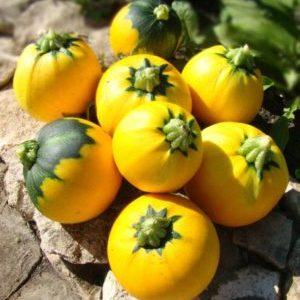
Origin and development
The Orange variety appeared as a result of the work of Russian breeders. During its creation, much attention was paid to taste and pulp.
Orange has a delicate taste and smooth skin. The variety quickly won the recognition of many gardeners, and therefore became widespread throughout Russia, especially in the Urals and Siberia.
Distinctive features
First of all, note the interesting appearance of the plant. At first glance, it seems that the bushes are strewn with large yellow oranges. This is where the name came from.
Zucchini is grown both in greenhouses and in the open air.The hybrid takes root best after legumes, cabbage or onions.
Fruit characteristics and yield
The average diameter of one zucchini is about 15 cm, weight is about 300-500 g. It has an attractive yellow color and a spherical shape. “Oranges” contain few seeds and dense pulp.
Widely used in cooking, as well as in dietary and baby food. From one bush, gardeners harvest about 3 kg of ripe harvest, in greenhouse conditions - up to 6-8 kg.
How to grow
Zucchini is grown by seedlings or without seedlings. Let's look at each of them below.
Planting without seedlings
Sow seeds after frost. Ideally, the air temperature should be at least 14 degrees. Before planting, be sure to disinfect the soil and seeds. To do this, use hydrogen peroxide or aloe juice.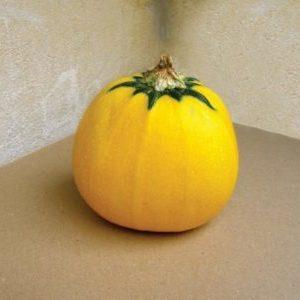
Also prepare the beds, remove debris and weeds in the fall. To create the most fertile soil, add sawdust or river sand to the beds. The components will serve as an excellent drainage layer and retain moisture.
Using the seedless method, it is better to cover the young seedlings with polyethylene or cloth. This will help avoid possible frosts or fogs, which increase the risk of developing diseases. Remove the shelter when the weather is moderate and warm outside.
Read also:
Proper cultivation of zucchini and care in open ground.
How do zucchini and zucchini differ in appearance, taste and other properties?
How to drink zucchini juice: benefits and harm to the body, rules of use.
Planting seedlings
For seedlings, prepare a container and soil. For containers, use plastic cassettes, flower pots, peat tablets or ordinary plastic cups.Before planting, be sure to treat them with a solution of hydrogen peroxide.
Use ready-made mixtures as primer, for example, “Krepysh” or “Universal” composition. They are enriched with vitamins that have a beneficial effect on seed development. Also, ready-made mixtures are already disinfected in advance and contain the required level of acidity.
Keep the seedlings in a warm and bright place. Seedlings love sun and space, so provide the plant with access to light. Water every 10 days using only warm water. Don't forget about fertilizing and fertilizers. Seedlings respond well to bird droppings, ammonium nitrate and urea.
Important! The product “Kornevin” is used as additional nutrition. From the name it is obvious that the drug strengthens the roots, making them more developed and powerful. You can purchase the product at a gardening store. Use Kornevin strictly in accordance with the recommendations on the packaging.
Care
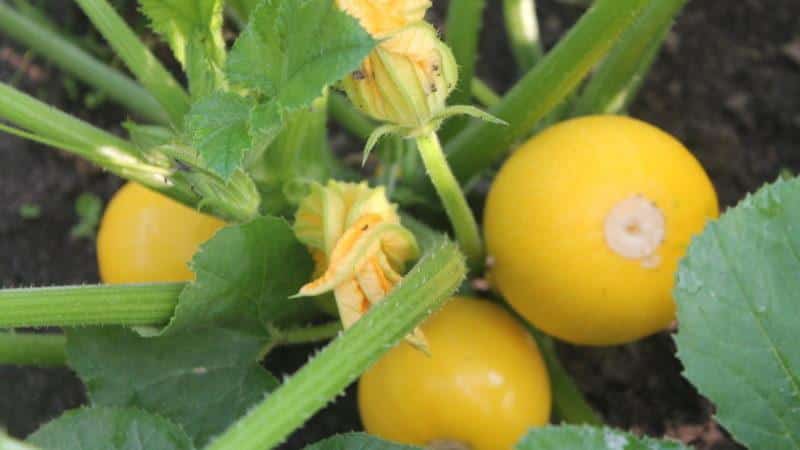
The vegetable is demanding of moisture, so the beds are watered regularly. To protect zucchini from root rot, water the bushes only with warm water. The frequency of watering is determined by the condition of the soil; on average, the interval is about 7-10 days. If the summer is dry and hot, place straw between the rows. It will help retain moisture in the soil for as long as possible.
In addition to watering, the beds with Orange are periodically loosened. Loosening improves oxygen access to the roots and also saturates the soil with vitamins. Afterwards, it is recommended to remove weeds that live and feed on zucchini. Especially a lot of weeds appear after fogs, dew and rain.
Pay special attention to fertilizing. Use mineral compounds and organic fertilizers as food.To strengthen the stems and leaves, use a mixture of cow manure and nitrophoska. And for the best setting of vegetables, water the bushes with wood ash.
Important! Experienced farmers use the growth stimulator Energen as a fertilizer. 2 capsules of the drug are diluted in 10 liters of water and the plants are watered at the rate of 2 liters of solution per bush. “Energen” is used especially actively during the fruiting period.
Features of cultivation and possible difficulties
Even an experienced gardener may encounter the problem of an excess of nitrogen-containing substances. This will lead to the fact that all the plant’s energy will be spent on the development of leaves, and not on the formation of zucchini. To avoid this, follow precise dosages. Excess nitrogen can be determined by the appearance of the plant. The leaves begin to curl and take on a dark color.
Important! The need for nitrogen decreases in the second half of summer. It is recommended to pay attention to organic substances at this time.
Remember that during the fruiting period the bushes need individual care. A good remedy is feeding with yeast, which stimulates the development of beneficial bacteria. It is best to feed plants in warm weather; when it gets cold, yeast fertilizers will have no benefit.
Diseases and pests
The most common diseases of zucchini are:
- White rot is a white coating on all parts of the plant. The stems become soft and covered with white mucus. The likelihood of disease increases during the fruiting period. For preventive purposes, it is recommended to use only disinfected seeds, regularly water the beds and add ash to fertilizing.
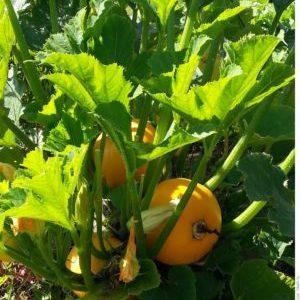
- White mosaic manifests itself in the form of yellow and green spots on the leaves, warts and dryness of the plates.This is a viral disease, so an integrated approach is used for treatment. The best option is a combination of chemicals and folk remedies.
- Fusarium withering affects the root and blood vessels of squash. The disease is dangerous because it quickly spreads to neighboring bushes. To prevent wilting, plant mustard or radish nearby, which have a healing effect on the soil.
- Powdery mildew It affects leaves and stems, causing them to become covered with a white coating. The virus slowly destroys bushes and can destroy the entire crop if measures are not taken in time. A proven remedy for powdery mildew is the above-mentioned ash solution or aloe juice.
Of the pests, the Orange is attacked by spider mites and melon aphids. Insects disrupt metabolism, as a result of which the plant slowly withers.
For preventive purposes, it is recommended to regularly remove weeds and spray the beds with a soap solution. Also, do not forget about loosening the soil and weeding. Often, improper care is the main cause of pests.
Harvesting and application
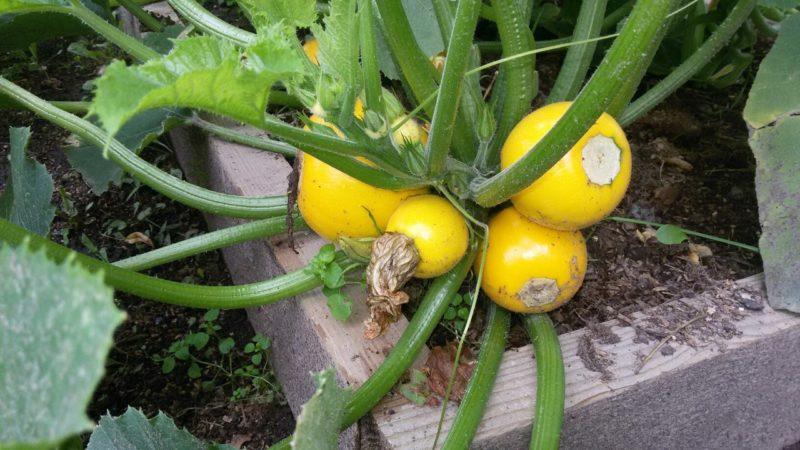
The ripeness of zucchini is determined by touch. If you hear a dull sound when you tap, the vegetable is ripe. Harvest harvested on time is stored longer and has better taste. Zucchini is harvested every 5 days. For long shelf life, do not wash vegetables under any circumstances, but simply wipe them with a dry cloth and put them in a basement or cellar. Please note that the room must be dry, warm and ventilated.
Zucchini is used in preparing many dishes. Vegetable stew or baked zucchini are especially popular. Due to its neutral taste, the vegetable goes well with almost all foods.Housewives also love to make zucchini pancakes or use them as preparations for the winter. Zucchini is added to canned tomatoes and cucumbers, used in lecho, and used to make healthy and tasty squash caviar.
Interesting! Surprisingly, even sweet desserts are made from zucchini. For example, apple and zucchini cake. No sugar is added to it, but honey or raisins are used. The dish turns out not only tasty, but also healthy. Even those who watch their figure eat it with pleasure.
Advantages and disadvantages of the variety
The advantages of the Orange variety include:
- Original appearance. The vegetable is often used as a base for stuffed dishes. An orange will decorate any holiday table.
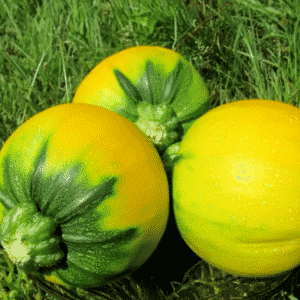
- Excellent taste. The delicate and sweet taste of the variety is combined not only with vegetables, but also with fruits.
- Easy to care for. Even beginning gardeners get high yields. The main thing is to water and loosen the beds on time, as well as remove weeds and apply fertilizers.
- Beneficial features. Regular consumption of zucchini improves the functioning of the gastrointestinal tract and helps eliminate excess cholesterol from the body. Moreover, zucchini helps to get rid of extra pounds and improve immunity.
- Possibility to grow in any region of Russia.
- Versatility in use. Vegetables make wonderful and nutritious soups and salads. Zucchini is also used in folk cosmetology recipes and masks are made. For example, a product based on zucchini and rolled oats exfoliates and moisturizes the skin well.
Among the disadvantages, gardeners point out that the crop is demanding on the composition of the soil. It is best to plant it in loamy soils.Orange can also be planted in sandy loam soils, but the yield will be much poorer. Otherwise, the variety has no shortcomings.
Farmer reviews
The Orange variety receives mostly positive reviews. Summer residents like it for its ease of care, taste and appearance. Negative reviews are extremely rare.
Margarita, Volgograd: “I planted Orange on the recommendation of a good friend. The yield exceeded all my expectations. The vegetables are beautiful and tasty, ripe in less than 2 months. Externally, the hybrid looks like a melon, just as yellow and sweet. I will definitely plant more.”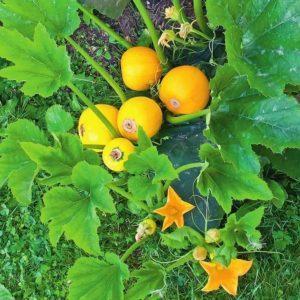
Olga, Belgorod: “For Orange, I always select the most fertile and spacious beds. Otherwise, the variety is unpretentious. A drip irrigation system is installed on the site, so the zucchini receives moisture and liquid fertilizers through it. I use the vegetable mainly fresh. So it seems tastier and sweeter to me. Next year I decided to make pickles. I hope Orange won’t let you down.”
Danil, Moscow: “The variety does not require care, but I have also met more successful hybrids. The orange, in my opinion, is too soft and slightly watery. I prefer dense pulp. The yield is average, I won’t say that this is the best hybrid.”
Conclusion
Orange zucchini is able to retain its beneficial properties even over a long period of time. storage. The vegetable can be safely placed in the cellar for the winter and enjoyed healthy dishes in winter or spring.
Zucchini is rich in antioxidants that keep your skin firm and youthful. In addition to the medicinal effect, the Orange variety will decorate any feast. A beautiful and bright zucchini will not leave connoisseurs of aesthetics indifferent.